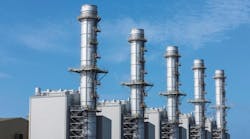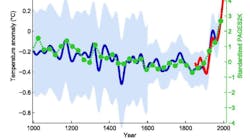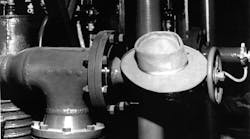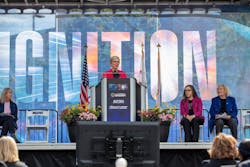On December 5, 2022, the National Ignition Facility (NIF) at Lawrence Livermore National Laboratory (LLNL) achieved the first-ever controlled nuclear fusion ignition with energy breakeven.
In other words, it produced more energy from fusion than the laser energy required to drive the reaction.
This was a major scientific achievement that resulted from work begun by LLNL scientists in the 1960s, when they hypothesized that lasers could be used to induce fusion in the laboratory. Six decades later, LLNL researchers delivered 2.05 megajoules (MJ) of energy to the target, resulting in a fusion energy output of 3.15 MJ (equivalent to 0.875 kWh).
- To download the new eBook, Ten Years of Clark's Remarks, click here.
Fast forward to July 30th this summer, when NIF scientists repeated the December 5th ignition and produced an even higher energy yield. For those who might not be clear about the difference between nuclear fusion and nuclear fission, here’s a quick primer courtesy of the U.S. Dept. of Energy’s Office of Nuclear Energy:
Fission occurs when a neutron slams into a larger atom, forcing it to excite and split into two smaller atoms—also known as fission products. Additional neutrons are also released that can initiate a chain reaction. When each atom splits, a tremendous amount of energy is released.
Uranium and plutonium are most commonly used for fission reactions in nuclear power reactors because they are easy to initiate and control. The energy released by fission in these reactors heats water into steam. The steam is used to spin a turbine to produce carbon-free electricity.
Fusion occurs when two atoms slam together to form a heavier atom, like when two hydrogen atoms fuse to form one helium atom. This is the same process that powers the sun and creates huge amounts of energy—several times greater than fission. It also doesn’t produce highly radioactive fission products.
The advantages of commercial power reactors based on controlled fusion, rather than fission, are significant. In addition to producing fewer radioactive products, sea water could theoretically be used as a fuel.
Sea water is rich in deuterium (an isotope of hydrogen with a nucleus consisting of one proton and one neutron, which is double the mass of the nucleus of ordinary hydrogen that has only a proton) – about one atom in 6,420 of hydrogen – or approximately 0.0312% by mass of all the naturally occurring hydrogen in the oceans. According to the International Atomic Energy Agency, the amount of deuterium present in one gallon of water could theoretically produce as much energy as the combustion of 300 gallons of oil.
Although conventional (fission) nuclear power plants are, in terms of greenhouse gas emissions, considered green, there are some significant environmental and safety concerns.
The mining and processing of uranium into nuclear fuel is extremely energy-intensive, meaning the emissions based on embodied energy are significant. There are always going to be some radioactive emissions and, even with no accidents or radiation releases from waste disposal operations, there are potential health hazards for workers. And the waste disposal has been, and continues to be, a significant problem.
No one wants spent nuclear fuel, that can remain dangerous for the next 250,000 years, in their backyard! Nuclear power, as we know it today, is also expensive.
So, the idea of fusion – as a clean and economical power source –provides great promise for carbon-free electrification. Hopefully the continuing work at the NIF will be well-funded and strongly supported. And it would benefit all of us to see the fruits of that labor much sooner than later.
##########
A contributor to HPAC Engineering since 2013 and a member of its editorial advisory board, the author is a principal at Sustainable Performance Solutions LLC, a south Florida-based engineering firm focusing on energy and sustainability. He can be reached at [email protected].










